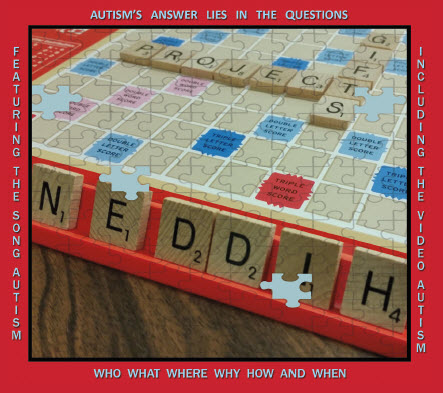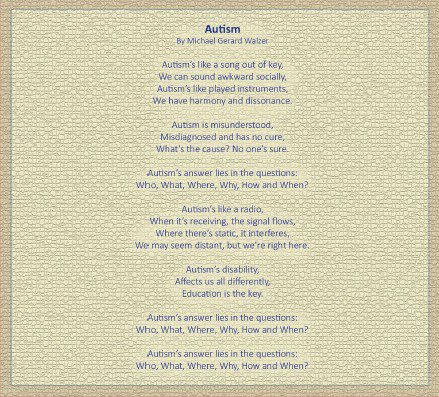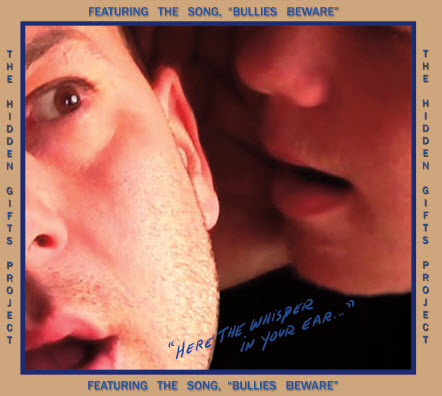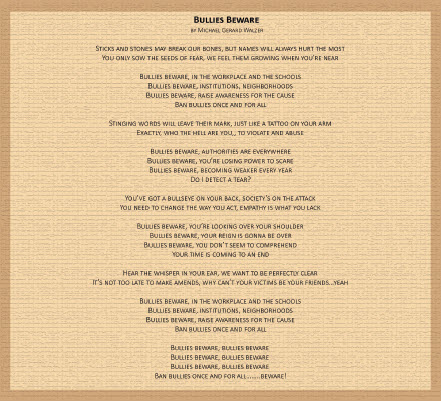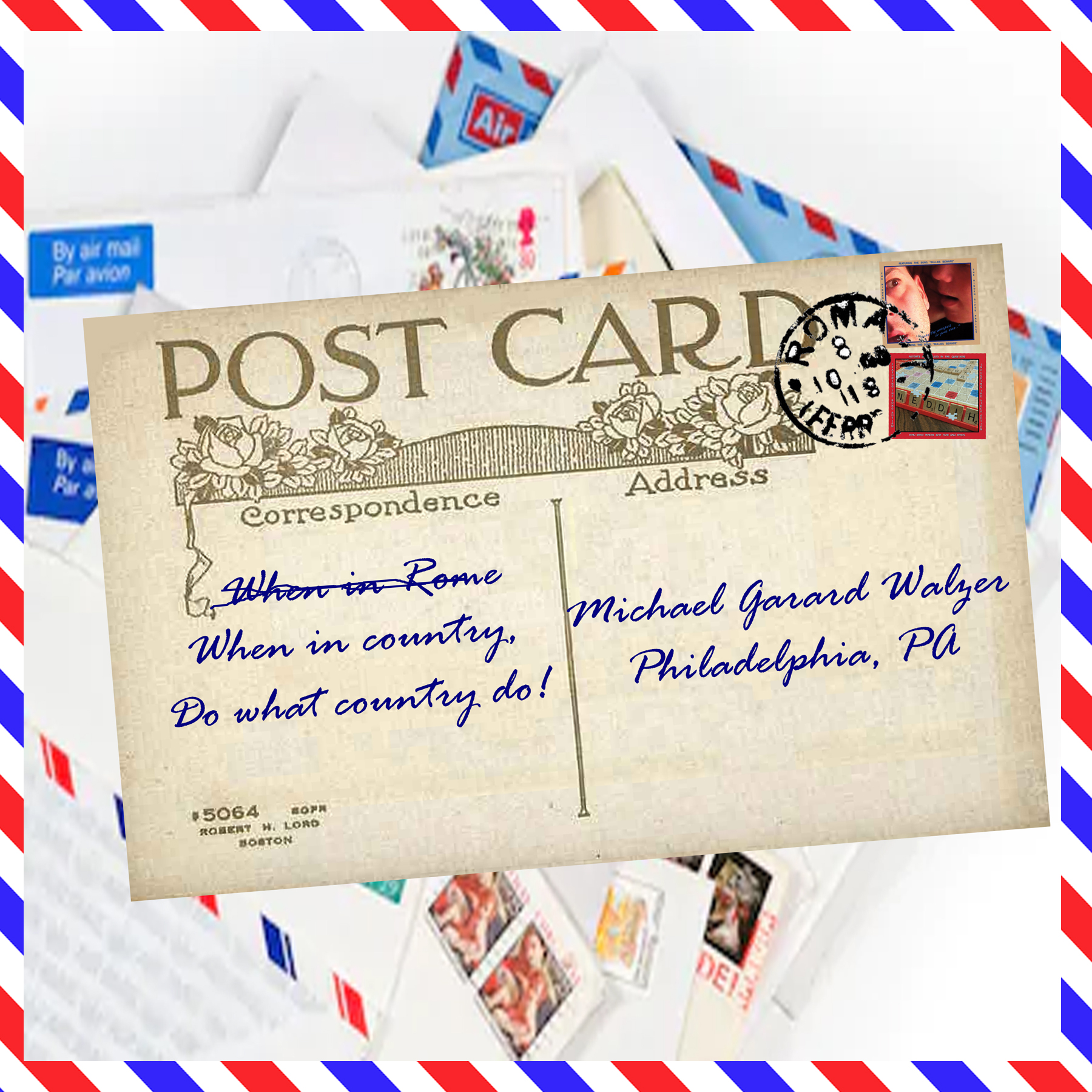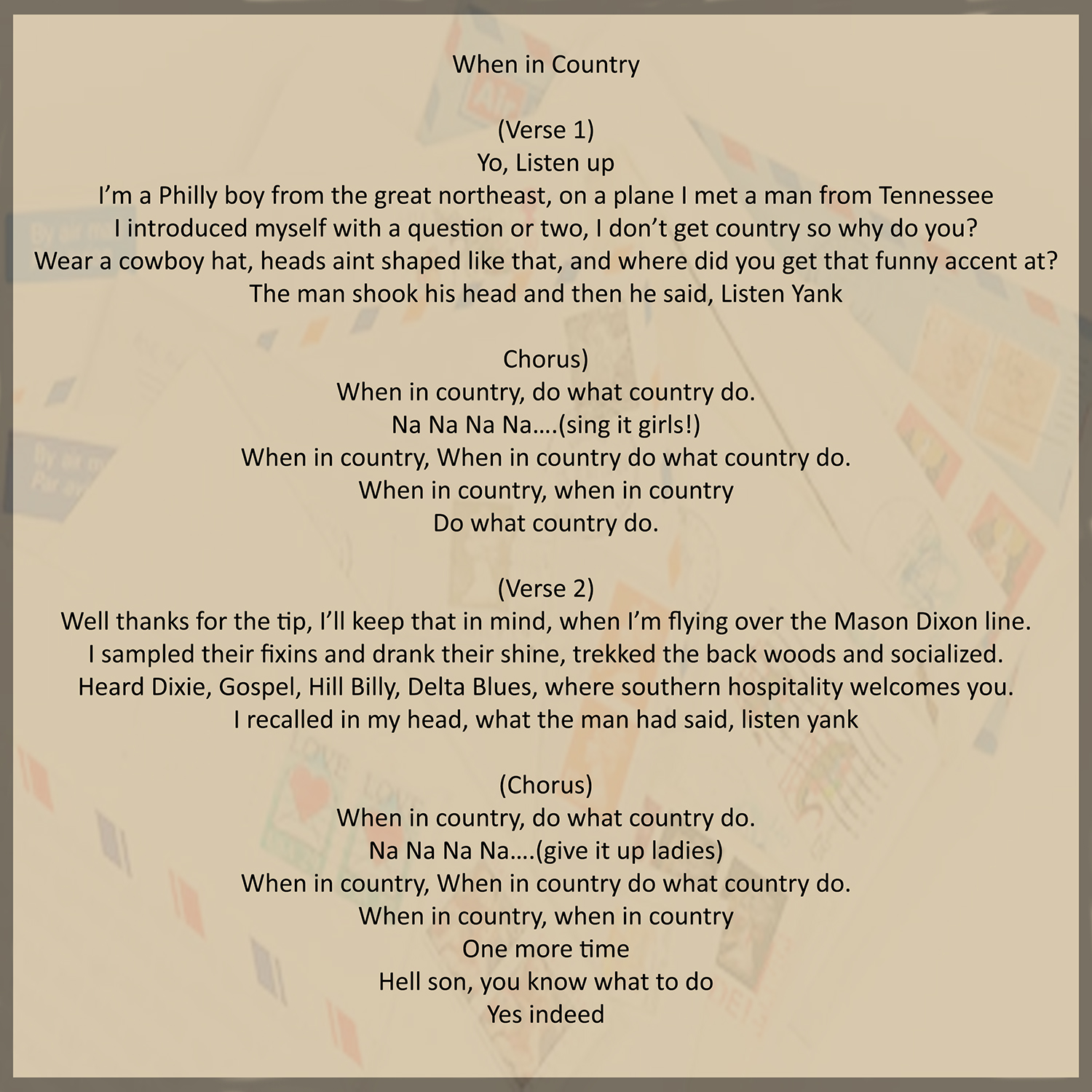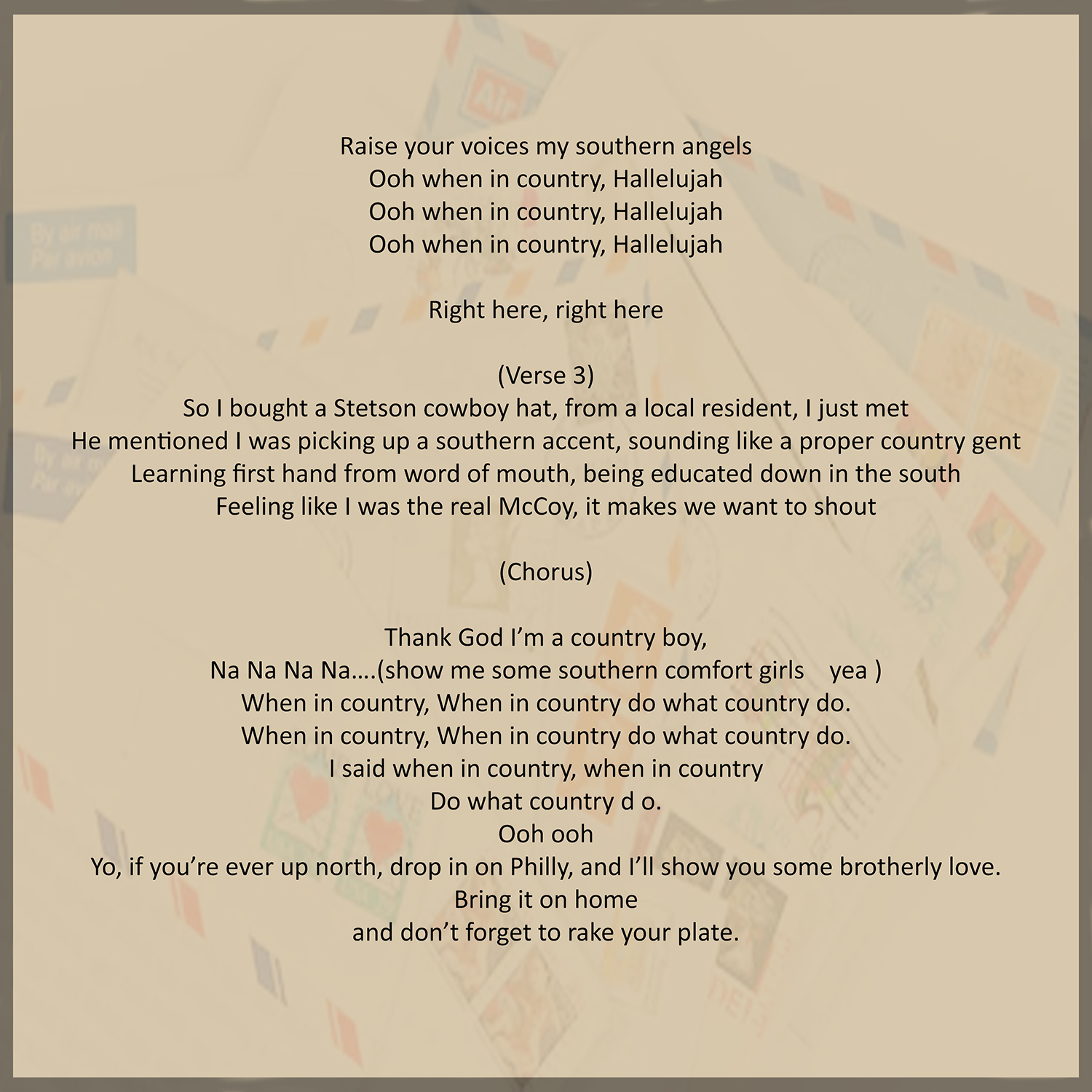When I started writing this book, I realized I had the opportunity to incorporate music, lyrics and the written word to illustrate my story.
“AUTISM” song.
This is the first song l wrote, recorded and produced. Its called, “AUTISM.” When I started writing this book, I realized I had the opportunity to incorporate music, lyrics and the written word to illustrate my story. When I wrote, “Autism,” I did not want to weigh down my lyrics with facts and stats. I chose similes to provide some insight into the world of autism. We need to ask the right questions: Who, what, where, why, how and when. With questions come answers and not just about autism, but anything that we experience and wish to comprehend in life. I first wrote the chords over ten years ago, but I did not have the concept or the lyrics to the song.
In 2012, I decided to write the book with music and lyrics. The song was available, floating around in the back of my mind, like many riffs and melodies, that linger in the mind of an artist. The lyrics came to me within a couple of days and I fine tuned the song over a short period of time. I wanted a simple tune that educated society from an autistic point of view, using first person (plural) pronouns, like “we” and “our.” I have been influenced by classical music since the sixties and it was e only natural to incorporate this genre of music into the song. I kept it short and sweet because society’s attention span is limited. This song is direct and to the point. I use the word “autism” seven times in a two minute song.
I recorded a cello, violin, flute and timpani to evoke emotions to connect with the listener. Autistic people do not always share the same issues. What may be true for one autistic person, may be different for another. Autistic people can be in their own little world at times, when someone is trying to communicate with them. I wanted to illustrate in the song that even though autistics may seem distant, we are still “right here” and can be aware of someone’s presence, regardless of how oblivious we may seem to be in the eyes of society.
Used as a simile, I chose to incorporate a radio to show that during transmission, when a radio signal goes in and out, static will occur. This will result in a loss of information, because the antenna is not receiving the signal. Most Autistic people that I encounter are very similar. In this song, you will hear the static fade and voices come leaping to the foreground singing, “but we’re right here”, to help illustrate this point. I have listened to other autistic songs, but they seem vague in both their titles and contents of the songs. Often, the word autism is not used in the song or is barely mentioned. The lyrics sing about love, family, support, but not autism.
I designed and illustrated my song, “AUTISM,” to have an impact on those, who will listen to the song and have a more empathetic understanding about autism and ask questions. (who, what, where, why, how and when). I was blessed to work with an excellent recording engineer, Doug Evans, (who is my George Martin) and fellow musicians, Joe Mangold and Bobby Michaels. They brought my concept to fruition. Every instrument works cohesively together, without stepping on each other in the final mix. This is first song that I have recorded and I am blown away with the outcome and all the support that I have received on this project.
You can click this link to listen and download the song, “AUTISM,” It’s free. Share and Enjoy!
“BULLIES BEWARE” song
The second song, “Bullies Beware,” is a voice for all of the victims of bullying. Bullies exist in the workplace, schools, institutions and neighborhoods. A person with autism is a bigger target for bullies, but anyone can be a victim of such abuse. I wrote this song as an anthem for all victims of abuse, as a rallying cry to lift their voices in solidarity and make a stand against bullies everywhere. I wanted to send a message loud and clear that their actions will not be tolerated anymore. Mike LeCompt’s voice is fearless and growls with confidence, giving the victims, a voice they can stand behind, as he addresses the bullies in the song. I originally wrote the chords back in 2012. Again, this song had no agenda, but within a few weeks, I began to write the lyrics for “Bullies Beware.”
The lyrics flowed out of me, from pen to paper. The words had been laying dormant inside of me, just waiting to come to the surface. I felt the need to write a song about the bullying that goes on in society, especially, when it comes to autism. This song was fresh and available and worked out perfectly for my concept of the song. Everyone can relate to this song, because we all have been intimidated and bullied in our lives. My concept was to have a simple beginning and slowly build layer after layer to create a euphoric climax at the end of the song. It was an ambitious undertaking. It’s only the second song that I have recorded. I wanted the lyrics to be as powerful as the music. I wanted to create a great one-two punch combination to give strength and weight to the song. There is no fat on these lyrics. Every line in this song propels each line to the next, as the voice begins to tell bullies, that their time is up and society is taking a stand against bullying.
With each passing lyric and chorus, we began to add an array of goodies, such as a kick drum, a floor tom, pizzicato, strings, horns, harmonics, crunch chords, a timpani, a gong, and background vocals. We incorporated textures of music, like wave after wave, building the intensity of the song for it’s dramatic finale. The orchestral background gave support and the call and response, between the lead and backup vocals worked well, together. When I first started writing the lyrics, they were too aggressive. I did not want the song to have a negative influence or engage anyone in being physical or threatening. Revenge and street justice can turn ugly. After seeing the documentary “BULLY” and reading books on other people’s experiences, as well as my own, two key thoughts came to me. The word EMPATHY goes hand and hand with bullying. These are some of the final changes I made to the lyrics. It reads, “YOU NEED TO CHANGE THE WAY YOU ACT, EMPTHY IS WHAT YOU LACK”. The other change was to suggest making friends with your victims, which reads, “IT’S NOT TOO LATE TO MAKE AMENDS, WHY CAN’T YOUR VICTIMS BE YOUR FRIENDS”. At the end of the third chorus, there is silence. The singer is one on one with the bullies.
The next set of lyrics reveal an empathetic response to the actions of bullies, everywhere. The essence of the song is that together, as a society, we will no longer tolerate bullies and they will ultimately be held accountable for their actions. As the song approaches the end, I used two measures of music that retard at the end. ( ritardando: to slow down the tempo). The first one begins to retard, coming out of the final chorus indicating the song is coming to a close. Then, I repeat another retard for dramatic effect with a descending baseline, (Mozart influence), but the music does not end there. I wanted to create an ominous feeling at the end of the song and leave a warning for all bullies by introducing a descending timpani roll that fades into the abyss of darkness, reminding bullies everywhere, their time is fading. There are six piano notes I play, causing dissonance during the timpani descent, invoking an eerie atmosphere to help sell this message, influenced by Stockhausen, perhaps, Holst. The final piece we recorded was actually the very first lyric of the song. The lyric starts with, “Excuse me, may I have a word?” Doug and I thought the singer should address the bullies at the beginning of the song to set the right tone. An anthem for all victims to join in and sing, “BULLIES BEWARE.” Stop the hatred.
This song can be purchased from Amazon by clicking this link.
“WHEN IN COUNTY” song.
THE LYRICS.
Around 2009, business was slow, so l worked in Voorhies, New Jersey for one of my basketball buddies, who gave me a job painting parts of his house to stay busy, until my artwork picked up again. l met a carpenter, who was hired to put in a wooden floor. He played country music everyday, while we worked. After listening all week long, the music must have infiltrated my thought process. I remember painting around the window frame, when out of nowhere, the phrase, “When In Country” popped into my consciousness. Immediately, it reminded me of the saying, “When in Rome, do what Romans do.” So l Segwayed that thought and followed up with, “When in country, do what country do.” I thought that was a great title for a song and knew l would have to write equally good lyrics to go with the new title. Basically, the way l looked at it was this song was about somebody visiting the country. If you are visiting the country, you are not from there? It’s like walking in someone else’s shoes. I have written other songs with this same approach in mind.
Then, l thought over the years, I have traveled down south on vacation or visited with friends, close to twenty times. In the late eighties, my friend, Scott and l used to visit his fiancé down in Lumberton, North Carolina. I was his best man, when they got married in a small church in South Carolina, right across from South Carolina’s, South of the Border, where l have shopped a few times, myself. I have been down to Disney World twice with the family. We vacationed in North Carolina several times, as well as, Tennessee and Virginia. We also traveled through other Southern states, like Maryland, West Virginia, Kentucky, and Georgia. I figured my song could be somewhat autobiographical, based on my experiences in the Southland. As l began to write the lyrics, the concept began to take on a story teller-like approach for the song. The song starts out portraying the main character as a young man from the great northeast, in Philadelphia, who boards a plane heading down Dixie. He meets a man from Tennessee and in his over excitement, he introduces himself with inappropriate questions like, “Why do you wear that cowboy hat and where did you get that accent at?” His immaturity and lack of knowledge about the South is apparent, but that does not make him a bad person. l thought about how people judge others, because they do not understand, feel insecure or fear the people they are judging.
I thought it was crucial to present a growth in the main character in his ability to have a desire to learn what he did not understand and open his eyes to what was once a biased viewpoint or closed mind, hence, walking in some one else’s shoes. After being questioned by the young man, the gentleman from Tennessee just stairs at the young man and says, “Listen yank, when in country, do what country do.” Unaware of his ignorance, but with a good heart and open mind, he continues to remind himself what the man from Tennessee had told him about “When in country,” while he is traveling through the South. As he mingles and delves in the Southland, he begins to comprehend and accept their values. His perspective changes, becoming receptive to their ways of life. This young man is experiencing the South, first hand by eating their food, drinking their shine, trekking the backwoods and socializing. He gains new insight and receives an education by learning what he once was ignorant about….the South.
Education is the answer. Knowledge is a tool you can learn to harness and use to your advantage in life. You can hold your own with anyone in daily conversation or any social standing that you may encounter. As the song progresses, so does he. The young man begins to pick up a southern accent and because he feels like the real McCoy, he wants to shout out, (Quoting John Denver) “Thank God l’m a Country Boy.” The song comes full circle, twice. First, the young man from Philly, asks the man from Tennessee questions about wearing a cowboy hat and picking up an accent. In the last set of verses in the song, he purchases and wears a Stetson cowboy hat and picks up a southern drawl, because of the southern influence he had experienced. The second, is at the end of the song, where he suggests that if anyone from the South visits up north, drop in and he will show them some brotherly love, reciprocating the Southern hospitality we was shown, when visiting the South. (Philadelphia…The city of brotherly love).
At the very end of the song, he shouts out, “and don’t forget to rake your plate.” This was one of the first phrases l picked up, when l was down South. Some of my Philly friends and l came down to visit our friend, Scott and his fiancé in Lumberton, North Carolina. Debbie, who Scott called his Southern Comfort, made the boys dinner. When we were finished she yelled out, “And don’t forget to rake your plate.” We could not understand what she said, so she repeated herself and we still could not understand what she was saying. Some North Carolinians talk real fast, at least to our northern ears. She repeated herself again and in a real slow response said,
” Don’t…forget…to…rake…your…plate.” We just fell about the place, laughing, because we never heard that expression before and Debbie could not understand what we were laughing at, which made us laugh even harder. Of course, what the phrase means is clean off the leftovers on your plate and into the trash. I never forgot the humor in that, which l often said to my own kids, when they were growing up, so l decided to record it at the end of the song, as an inside joke and salute to the Southland.
THE MUSIC.
The song is a country rock song. I do not particularly listen to that much country music, but as an artist, you can never tell where or when you will be influenced by your surroundings. Working in my friend’s house, listening to country music all day long, had some kind of affect on my thinking process. Being a professional artist, since 1981, l knew to take full advantage of this title that surfaced from my subconsciousness. At the time, I had a song l was playing around with for several years. It had no concept or lyrics. I always have a bunch of those orphan songs floating around in my head. I am not sure why, but this particular set of chords tapped me on the shoulder and l began testing the lyrics along with the music. It connected right away. The song started out using a rock riff, melodic base line, with heavy drum fills on percussion. At first, along with my lyrical concept for the song, l thought the young man from up north would represent the rock part of the song. As he travels down South, he and the music would Segway together into more of a country rock orientated piece of music, mirroring his growth as an individual, who is wallowing and absorbing himself in a culture he has up to now only read or heard about in his young life.
Now, he was being educated in the South and by the South . He became a sponge soaking up everything he experienced during his journey. The girls’ vocals added the country, soul and gospel feel l was looking for as the song and story moved forward. At the break, where the solo comes in, l hired top musicians to record a chicken-picking guitar solo, then incorporated a steel pedal guitar, accompanied with a banjo. The girls raise their voices to the heavens, chanting their “Hallelujahs” over the backing vocals of the song’s tittle, “When in Country.” Piano, horns and a Hammond b-3 organ were added for color and flavor, strengthening the song’s climatic performance. Basically, it’s about a young man from up north, who is ignorant of the southern culture and receives an education from the south, gaining a new perspective about his southern neighbors, changing his life for the better….or just like one of my favorite adages, walking in someone else’s shoes.
This song can be purchased from Amazon by clicking this link.

